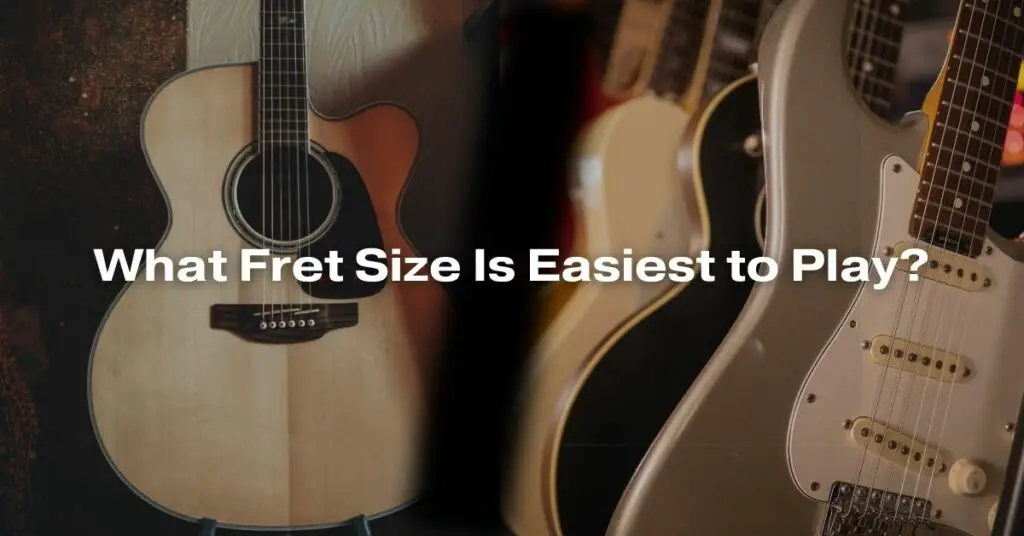For guitarists, choosing the right instrument is essential for enhancing their playing experience. One of the critical factors that influence ease of playing is the fret size. Frets come in various dimensions, and selecting the appropriate size can significantly impact a guitarist’s comfort, technique, and overall performance. In this comprehensive guide, we will explore the different fret sizes and their effects on playability, helping guitar enthusiasts make informed decisions about their instrument choices.
Understanding Fret Sizes
Fret size refers to the height and width of the metal strips embedded on the guitar neck. These frets divide the neck into segments, allowing musicians to produce different notes by pressing down the strings against them. Fret sizes are generally categorized as jumbo, medium jumbo, medium, narrow, and vintage-style frets.
Jumbo Frets:
Jumbo frets are characterized by their larger height and width. They provide more space between the fingerboard and the strings, making it easier for players to press the strings down. This extra space reduces the chance of accidentally muting adjacent strings, allowing for smoother transitions between notes and chords. Guitarists who prefer playing with a lighter touch often find jumbo frets more comfortable.
Medium Jumbo Frets:
Medium jumbo frets strike a balance between the extra space provided by jumbo frets and the snug feel of smaller frets. They offer a comfortable grip and are suitable for various playing styles, making them a popular choice among many guitarists. Medium jumbo frets cater to those who do not want extreme spacing and prefer a versatile option.
Medium Frets:
Medium frets have a standard size that is neither too large nor too small. They offer a balanced playing experience and are commonly found on many guitars. Players who are new to the instrument often find medium frets easy to adapt to, making them an excellent choice for beginners and those looking for an all-purpose fret size.
Narrow Frets:
Narrow frets are smaller in height and width compared to medium and jumbo frets. They are often found on vintage guitars and some acoustic instruments. Guitarists with smaller hands may find narrow frets more comfortable, as they require less finger stretch to press down the strings. However, players with larger hands might find them cramped, affecting their playability.
Vintage-style Frets:
Vintage-style frets are similar to narrow frets in size. They are commonly found on vintage and reissue guitars, replicating the specifications of older instruments. Vintage-style frets offer a classic feel and are favored by musicians who appreciate the vintage sound and vibe.
Choosing the Right Fret Size
The choice of fret size depends on individual preferences, playing style, and hand size. Here are some factors to consider when choosing the right fret size:
Hand Size and Finger Stretch:
Players with smaller hands might find narrow frets or medium-sized frets more manageable, as they require less finger stretch. In contrast, guitarists with larger hands may prefer medium jumbo or jumbo frets for comfortable playability.
Playing Style:
Guitarists who perform intricate solos and bends often prefer jumbo or medium jumbo frets, as they offer more space for precise finger movements. Those who play rhythm guitar and chords might opt for medium or vintage-style frets for a snug feel.
String Bending:
If you frequently bend strings during your playing, jumbo or medium jumbo frets provide ample space for bending without fretting out, ensuring clear and sustained notes.
Guitar Genre:
Certain music genres, such as blues and rock, often involve expressive techniques like string bending and vibrato. Guitarists in these genres might lean towards guitars with jumbo or medium jumbo frets. On the other hand, players in genres like jazz or fingerstyle acoustic may prefer guitars with medium or vintage-style frets for precise note articulation.
Conclusion
In the world of guitars, there is no one-size-fits-all answer to the question of which fret size is easiest to play. The ideal fret size varies from person to person, depending on individual preferences and playing techniques. Guitarists are encouraged to try out different guitars with various fret sizes to determine what feels most comfortable and suits their playing style.
By understanding the characteristics of different fret sizes and considering factors such as hand size, playing style, and musical genre, guitarists can make informed decisions when selecting their instruments. Whether it’s the expansive spacing of jumbo frets, the versatility of medium jumbo frets, or the classic feel of vintage-style frets, the right choice can significantly enhance a guitarist’s playing experience, enabling them to express themselves effortlessly and enjoy their musical journey to the fullest.

